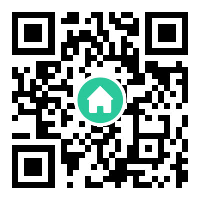In the ever-evolving digital landscape, Telegram channels have emerged as a powerful tool for communication, information sharing, and community building. Unlike traditional social media platforms, Telegram channels offer a unique blend of privacy, scalability, and flexibility, making them a preferred choice for individuals, organizations, and activists worldwide. With features like unlimited subscribers, end-to-end encryption, and cross-platform accessibility, these channels are redefining how content is disseminated and consumed in the 21st century.
The Rise of Telegram Channels
The popularity of Telegram channels can be traced back to the platform’s commitment to user privacy and freedom of expression. Launched in 2013, Telegram quickly gained traction as a secure messaging app, but its channel feature—introduced in 2015—transformed it into a hub for public discourse. Channels allow administrators to broadcast messages to an unlimited audience, while subscribers can read, forward, or interact with content without revealing their identities. This anonymity has made Telegram channels particularly appealing in regions with strict censorship laws, enabling activists and journalists to share uncensored news and mobilize communities.
Diverse Use Cases
Telegram channels serve a multitude of purposes across industries. For businesses, they act as marketing tools to promote products, share updates, or provide customer support. Educational institutions and trainers use channels to distribute course materials, host Q&A sessions, or conduct live workshops. Meanwhile, hobbyists and niche communities—from cryptocurrency enthusiasts to fitness groups—leverage these platforms to exchange ideas and resources. Notably, during global crises like the COVID-19 pandemic, governments and health organizations utilized Telegram channels to disseminate real-time information, demonstrating their utility in emergency communication.
Privacy and Security Concerns
While Telegram channels offer unparalleled privacy features, they have also sparked debates about misuse. The platform’s encryption protocols and lack of content moderation make it a double-edged sword. On one hand, they protect users from surveillance; on the other, they can harbor illegal activities, misinformation campaigns, or extremist content. For instance, cybersecurity experts have identified channels dedicated to hacking tutorials, pirated media, and even black-market transactions. This has led to calls for balanced regulation—measures that safeguard free speech without compromising public safety.
Monetization and Sustainability
The monetization potential of Telegram channels remains a hot topic. Unlike YouTube or Instagram, Telegram does not offer built-in ad revenue models, pushing creators to explore alternative strategies. Some channels use affiliate marketing, sponsored posts, or subscription-based "premium" content. Others integrate third-party payment gateways or crowdfunding platforms like Patreon. However, the absence of centralized monetization tools poses challenges for scalability. Despite this, innovative creators have turned limitations into opportunities, building loyal audiences willing to pay for exclusive insights, early access, or personalized interactions.
The Future of Telegram Channels
As technology advances, Telegram channels are poised to evolve further. Integration with AI-driven tools could enable automated content curation, real-time analytics, or chatbot-based engagement. Enhanced multimedia support—such as 4K video streaming or VR compatibility—might redefine user experiences. Additionally, Telegram’s open API encourages developers to build custom bots and plugins, expanding functionality. However, the platform’s growth will depend on addressing critical issues like misinformation, user verification, and ethical content moderation. If Telegram strikes this balance, its channels could become the gold standard for decentralized, secure communication in the digital age.
Conclusion
Telegram channels represent more than just a communication tool; they embody the shifting dynamics of online interaction. By combining privacy, accessibility, and versatility, they empower users to shape narratives and build communities beyond geographical or political boundaries. As society grapples with the challenges of digital trust and information overload, Telegram’s model offers valuable lessons—and opportunities—for reimagining how we connect, share, and collaborate in an increasingly interconnected world.













